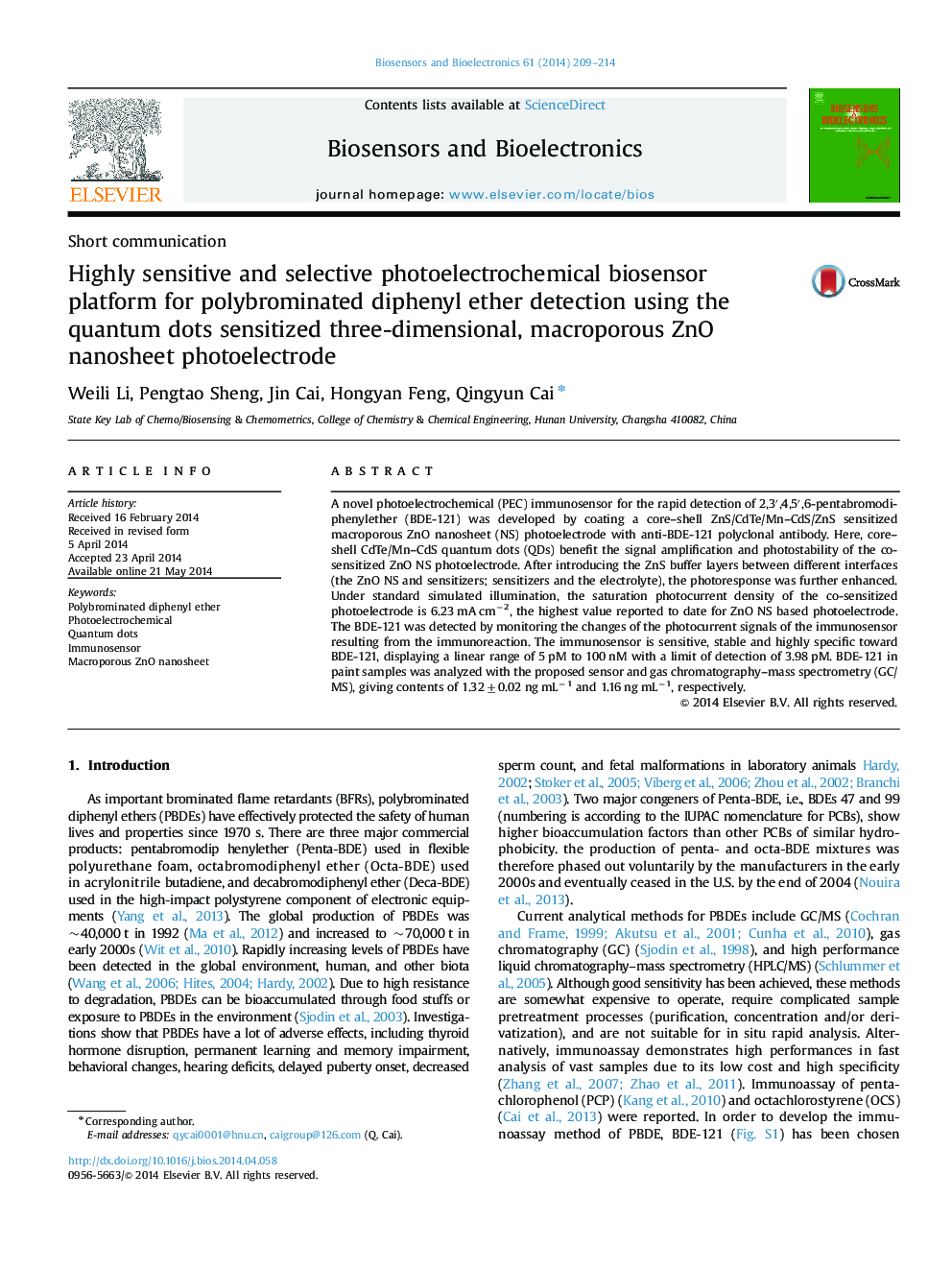| Article ID | Journal | Published Year | Pages | File Type |
|---|---|---|---|---|
| 7233470 | Biosensors and Bioelectronics | 2014 | 6 Pages |
Abstract
A novel photoelectrochemical (PEC) immunosensor for the rapid detection of 2,3â²,4,5â²,6-pentabromodiphenylether (BDE-121) was developed by coating a core-shell ZnS/CdTe/Mn-CdS/ZnS sensitized macroporous ZnO nanosheet (NS) photoelectrode with anti-BDE-121 polyclonal antibody. Here, core-shell CdTe/Mn-CdS quantum dots (QDs) benefit the signal amplification and photostability of the co-sensitized ZnO NS photoelectrode. After introducing the ZnS buffer layers between different interfaces (the ZnO NS and sensitizers; sensitizers and the electrolyte), the photoresponse was further enhanced. Under standard simulated illumination, the saturation photocurrent density of the co-sensitized photoelectrode is 6.23 mA cmâ2, the highest value reported to date for ZnO NS based photoelectrode. The BDE-121 was detected by monitoring the changes of the photocurrent signals of the immunosensor resulting from the immunoreaction. The immunosensor is sensitive, stable and highly specific toward BDE-121, displaying a linear range of 5 pM to 100 nM with a limit of detection of 3.98 pM. BDE-121 in paint samples was analyzed with the proposed sensor and gas chromatography-mass spectrometry (GC/MS), giving contents of 1.32±0.02 ng mLâ1 and 1.16 ng mLâ1, respectively.
Related Topics
Physical Sciences and Engineering
Chemistry
Analytical Chemistry
Authors
Weili Li, Pengtao Sheng, Jin Cai, Hongyan Feng, Qingyun Cai,
